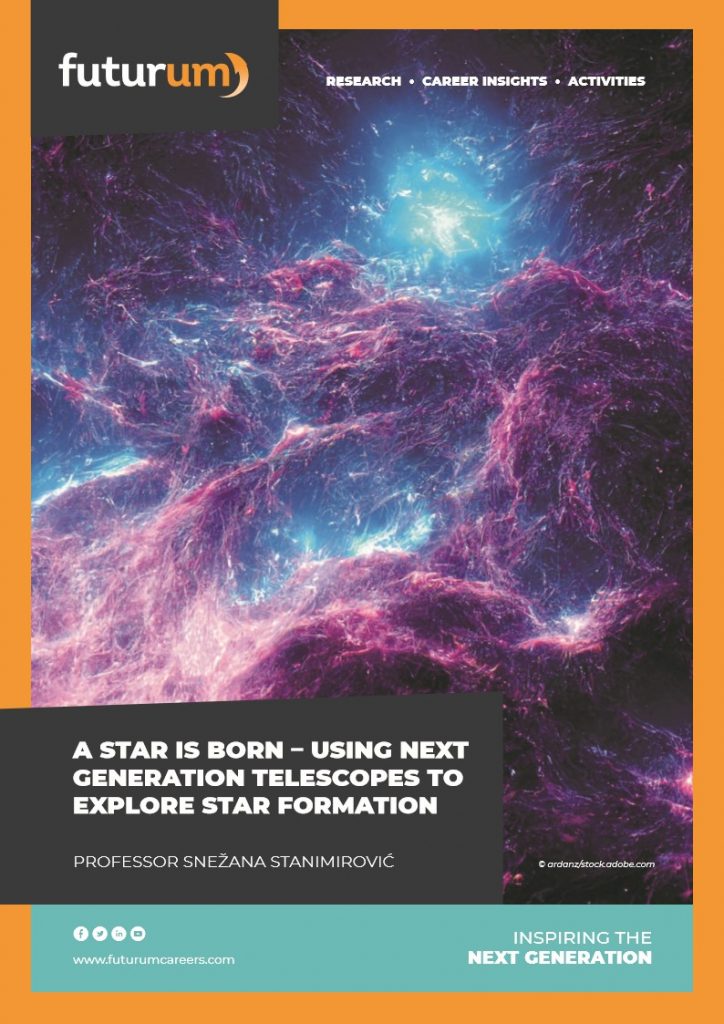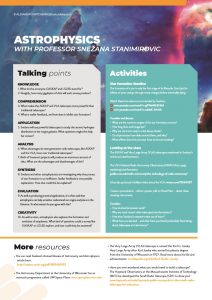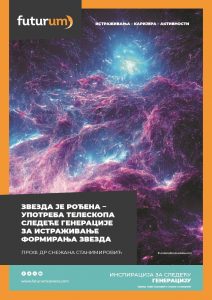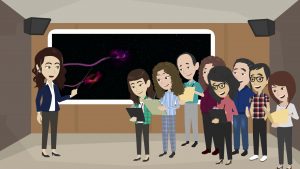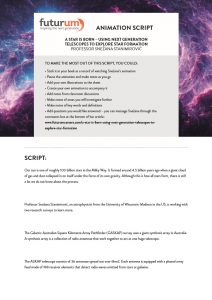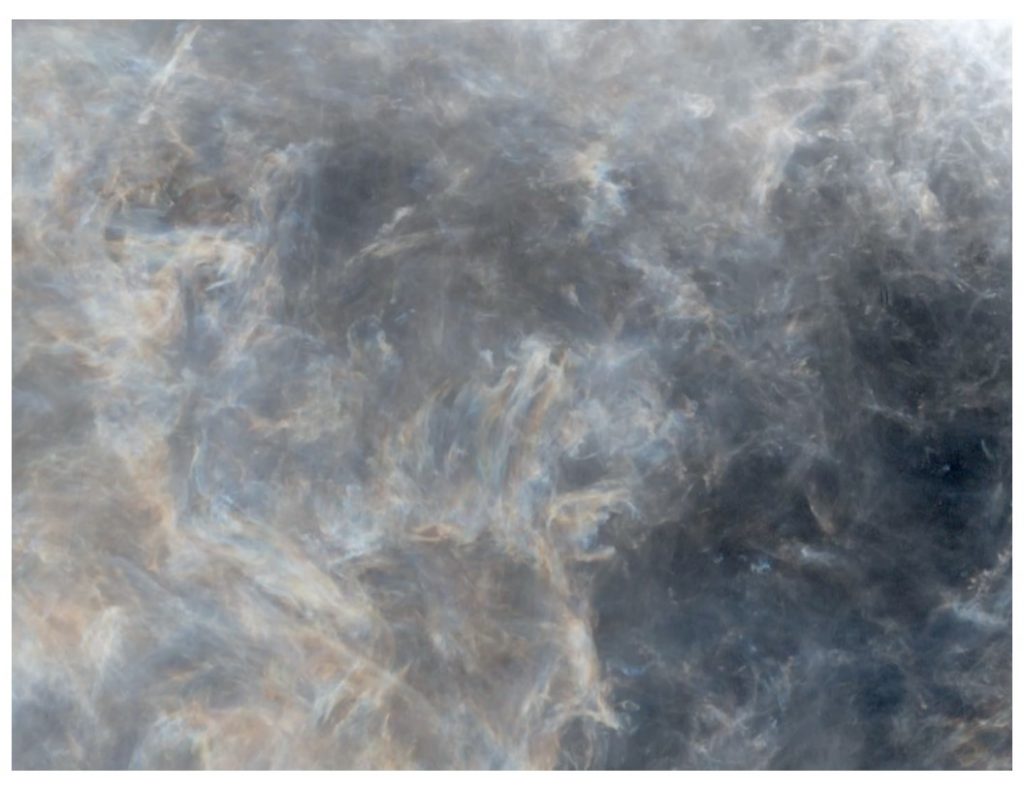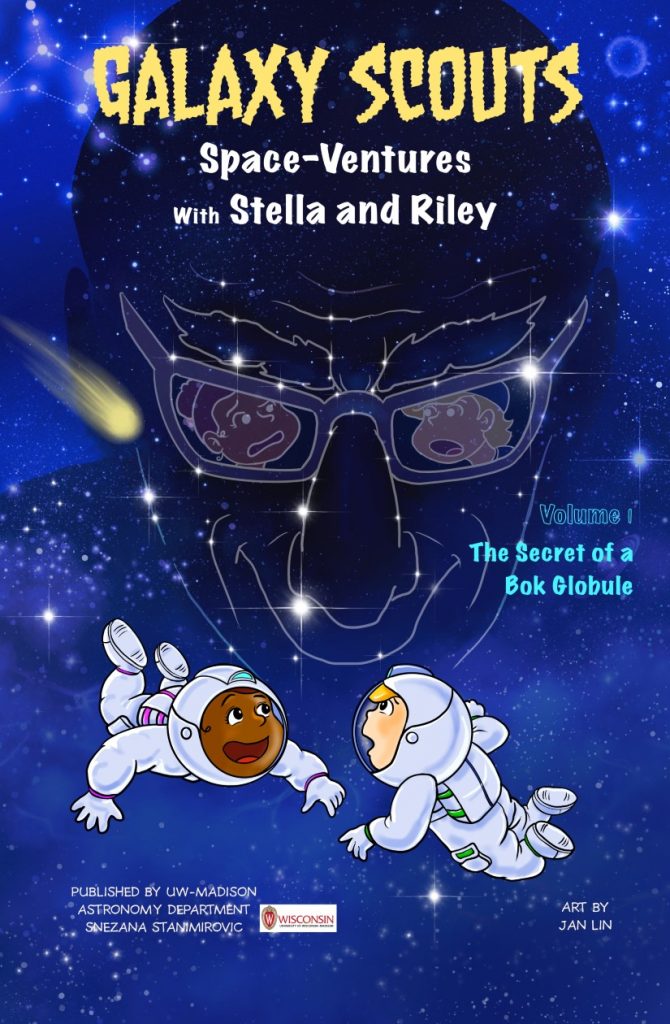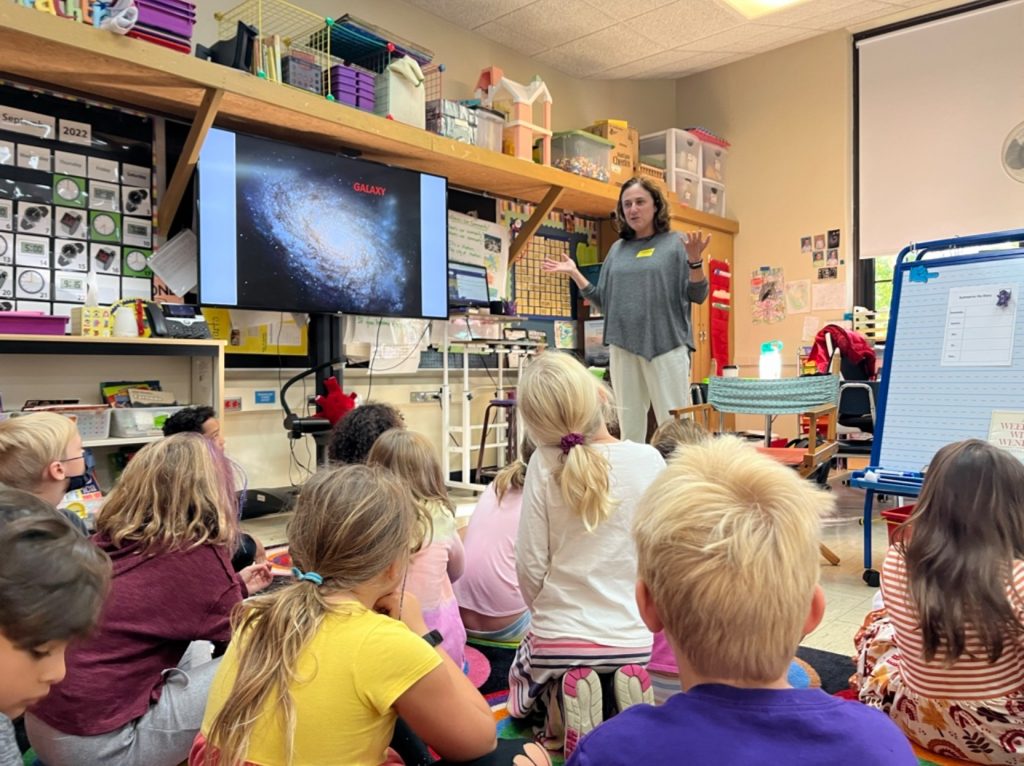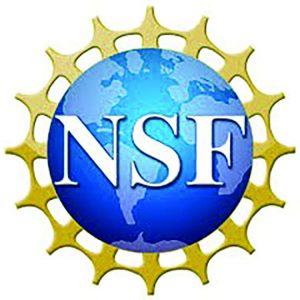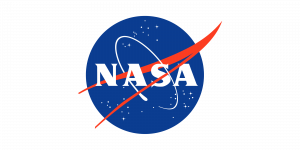A star is born – using next generation telescopes to explore star formation
Without the Sun, life on Earth would likely never have formed. But how did the Sun, and the other 100 billion stars in our galaxy, come to be? The process behind the formation of stars is an intricate dance that is influenced by complex forces and interactions. Using a new generation of state-of-the-art telescopes, Professor Snežana Stanimirović, from the University of Wisconsin-Madison in the US, is hoping to unravel the mysteries of this cosmological choreography.
TALK LIKE AN ASTROPHYSICIST
EXOPLANET — a planet outside our Solar System
INTERSTELLAR CLOUD — an accumulation of gas, dust and plasma that may go on to form a star
PHASED ARRAY FEED — a large group of receivers on a dish antenna that allow for a larger area of the sky to be imaged
RED GIANT — a star that has expanded to a tremendous diameter during the final stages of its lifetime
SOLAR MASS — the mass of the Sun, often used as a unit of measurement in astrophysics
STELLAR FEEDBACK — energy, momentum and turbulence emitted by stars that interferes with the process of star formation
SYNTHESIS ARRAY — a collection of antennae, often spread out over a large area, that work together to form a powerful telescope
WHITE DWARF — the extremely dense remnant core of a dead star
In the middle of winter, when rain is pouring down and a fierce gust of wind turns your umbrella inside out, it can be easy to forget that the Sun exists! But, even when you are soaked through and chilled to the bone, you should be grateful that we have our very own ball of hot plasma watching over us. Without the Sun, life on Earth would not exist.
Our sun is one of roughly 100 billion stars in the Milky Way. In about 5 billion years, it will expand into a red giant, swallowing the Earth along with all the life that it helped create, before eventually shrinking into a white dwarf and fizzling out, roughly 8 billion years from now.
That is how it all ends, but how did it begin? The Sun formed around 4.5 billion years ago when a giant cloud of gas and dust collapsed in on itself under the force of its own gravity. This is the process by which all stars form, but there is still a lot that we do not know about it. Professor Snežana Stanimirović from the University of Wisconsin-Madison has been working with two surveys, GASKAP and LGLBS, to try and shed some light on the processes of star formation.
What is the GASKAP survey?
The Galactic Australian Square Kilometre Array Pathfinder survey (GASKAP) makes use of a giant synthesis array in Australia. A synthesis array is a collection of radio antennae that work together to act as one huge telescope. The ASKAP telescope is made up of 36 antennae spread out over 6km2. Each antenna is equipped with a phased array feed (PAF) made up of 188 receiver elements that detect radio waves that have been emitted from astronomical sources like stars or galaxies.
The PAF technology is brand-new in radio astronomy and provides a significant upgrade on traditional radio telescopes, which have only a few receivers, at most. As a result, the ASKAP telescope can capture images of a much higher quality. ASKAP can image large swathes of the night sky faster and images or a large field of view; now they can do both.
What is the GASKAP survey looking for?
“GASKAP is providing a super high-resolution view of how interstellar clouds form and evolve, maturing to the point of making stars,” says Snežana. The incredibly detailed images that GASKAP produces will allow her to study many important physical processes for the first time. These processes are involved in the formation of stars and have a big impact on how galaxies evolve and change.
For the last four years, the GASKAP survey has been working on pilot studies. These are trials that allow researchers to test out their observation and data processing strategies. So far, researchers have surveyed two of our closest galactic neighbours, the Small and Large Magellanic Clouds. These two galaxies are both part of the same galactic cluster as the Milky Way, which means they are close enough for ASKAP to view them in great detail.
As the pilot studies draw to a close, Snežana and her colleagues are preparing to start surveying much larger areas of the sky. They plan to map a large area of the Milky Way, as well as something known as the Magellanic Stream. This is a long tail of gas extending from the Magellanic Cloud galaxies that has been formed by interactions between them and the Milky Way. These interactions are likely to have a big effect on how the galaxies evolve.
What is LGLBS?
The Local Group L-Band Survey (LGLBS) is using a telescope known as the Karl G. Jansky Very Large Array (VLA). This telescope is in New Mexico, in the US, and uses a similar method to ASKAP to create the sharpest possible images. Like ASKAP, this survey is observing galaxies within our local cluster. LGLBS is taking observations of the Andromeda and Triangulum galaxies, as well as four dwarf galaxies also within the cluster. Besides the Magellanic Clouds, these are the only star-forming galaxies that current radio telescopes can observe in high-resolution.
What is LGLBS looking for?
The images produced by LGLBS will allow Snežana to study the distribution of atomic hydrogen within these galaxies. “Atomic hydrogen is important because it represents the very first seed for making molecular clouds,” explains Snežana. By observing clouds of cold atomic hydrogen, Snežana will be able to glimpse the conditions that eventually lead to the formation of new stars.
Snežana hopes that by studying the distribution of atomic hydrogen in these galaxies, she will also be able to shed light on one of astrophysics’ most pressing questions. The Milky Way contains about a billion solar masses worth of gas that could go on to form stars – an amount of gas that is a billion times more massive than the Sun. Even so, only one solar mass of stars is formed each year. Why is this process so inefficient?
One of the main barriers to star formation is something known as stellar feedback. This is turbulence generated by the activity of stars that prevents clouds of gas collapsing under their own gravity and forming new stars. Stellar feedback can be caused by fast-flowing streams of particles that are emitted by stars, known as stellar wind, or by stars exploding into supernovae. “The basic idea is that by kicking the gas around, turbulence makes it harder for gravity to cause clouds to collapse and form stars,” says Snežana.
LGLBS will also study radio wave emissions from these galaxies and observe how interstellar gas moves around and interacts with its surroundings. This is a massive project that will likely require over 2000 hours of observations and produce an immense amount of data.
How will the data be handled?
Both the GASKAP and LGLBS surveys involve marathon amounts of observation time and will produce about a million gigabytes of data. These data sets will allow Snežana and her team to investigate scientific questions from a diverse range in more detail than traditional radio telescopes. This is a huge step forwards as, traditionally, researchers would have to choose between high resolution of disciplines. “To handle the observations, data processing and the highly diverse areas of science, large international teams with a broad range of technical and scientific expertise are needed,” explains Snežana. Large supercomputers will be required to process all these data and whole teams of scientists will be needed to manage these systems.
What are the overall aims of these projects?
Snežana hopes to uncover the mysteries of the star formation process. There are three main questions that she hopes to provide answers to: how is atomic gas distributed within galaxies, and how does this change in different galaxies? What drives interstellar turbulence, and how does this affect the distribution of gas within galaxies? And how do star-forming clouds of gas accumulate from this interstellar atomic gas?
Both GASKAP and LGLBS are producing images that will help Snežana answer these questions. “The survey is still collecting observations and processing the data we have so far,” she says. “This requires a lot of work and the use of very powerful supercomputers.” Snežana and her fellow researchers are starting to get some early results, and there is a lot of fascinating work still to come.
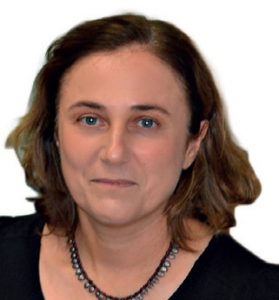 PROFESSOR SNEŽANA STANIMIROVIC
PROFESSOR SNEŽANA STANIMIROVIC
Department of Astronomy, University of Wisconsin-Madison, USA
Field of research: Astrophysics
Research project: Using state-of-the-art telescopes to investigate how clouds of interstellar gas form and become stars
Funders: US National Science Foundation (NSF), National Aeronautics and Space Administration (NASA), University of Wisconsin-Madison
ABOUT ASTROPHYSICS
A strophysics is the branch of science that seeks to understand the nature of the Universe and the things in it by applying the methods and principles of physics and chemistry. Fields of research in astrophysics include the lifecycle of stars, the formation of planets and the evolution of galaxies. By exploring these topics, astrophysicists can help us understand our place in the Universe.
What research opportunities will be open to the next generation of astrophysicists?
With the recent launch of NASA’s James Webb Space Telescope and the development of other next-generation telescopes, the field of astrophysics finds itself at an exciting moment. Future astrophysicists will have the chance to work on some ground-breaking projects. Studying the formation of exoplanets, observing the oldest galaxies in the Universe and exploring new fields such as dark matter, dark energy and gravitational waves are all research opportunities that may be available to new astrophysicists.
What makes a successful astrophysicist?
Success in this field is not determined solely by your understanding of maths and physics. Good scientists are able to communicate well, collaborate with others and ask for help when they need it. Being curious and asking questions is crucial to making new discoveries. Snežana also emphasises that keeping active outside of your career is important. “Especially during more stressful career stages, exercising, walking or enjoying a hobby really helps to get a fresh perspective and relax,” she says.
Reference
https://doi.org/10.33424/FUTURUM382
Pathway from school to astrophysics
• Focus on mathematics, physics, chemistry, astronomy and computer science. Remember the importance of writing skills. Being a good scientist involves communicating your research through papers, talks and lectures.
• Astrophysics courses at university usually start with lots of mathematics and physics before specialising into more advanced physics and astrophysics.
• Taking courses in computer science and statistics can also be very useful, as astrophysics involves processing large
amounts of data.
Explore careers in Astrophysics
• The American Astronomy Society and the British Royal Astronomical Society both have careers pages with lots of useful information.
• NASA runs an internship programme which has many short-term projects that you can get involved in.
• Local planetariums or astronomy clubs are a great way to meet like-minded people who share your interests. For example, the Adler Planetarium, in Chicago in the US, and the Planetarium at We The Curious, in Bristol in the UK, host many talks and shows.
• There are many citizen science projects that you can get involved with. You can even help NASA discover new planets and galaxies.
Meet Snežana
Who or what inspired you to become a scientist?
My interest in astronomy started during high school. In particular, books like “Cosmos” by Carl Sagan and “A Brief History of Time” by Stephen Hawking left a strong impression on me. Participating in small research projects was also important for me. I was able to go to a research centre called Petnica, where they offered workshops, talks and research projects for high school students. I enjoyed participating in hands-on astronomy activities there, and this secured my passion for astronomy and encouraged me to study it for my undergraduate degree.
Your career path has seen you travelling the world. What have been the challenges and rewards of this?
Travelling around the world and living in several different countries has broadened my horizons and allowed me to meet wonderful people from different cultures. It also enabled me to use world-class telescopes and learn from exceptional scientists. The key challenge has always been living far away from my family and not being able to be there when something important happens. I have a young son, and being far away from family makes it harder for him to interact with his grandparents as frequently as he wants.
What would students be surprised to learn about your life as an astrophysicist?
Probably one surprising thing is that I am making a comic strip for kids! This started about 10 years ago as an outreach project with the goal of encouraging middle school students to pursue STEM careers. My collaborators and I thought that one way we could contribute is by telling stories about the daily life of scientists and featuring innovators and scientists in a realistic and positive way. While I provide science ideas and explanations, I work with a wonderful team that includes an artist/illustrator and several educators – it’s a super fun and enjoyable experience! The comic is called “Galaxy Scouts: Space-ventures with Stella and Riley”, and the project web site is: https://www.astro.wisc.edu/outreach/astro-comic/.
What are your proudest career achievements, so far?
I have received several really cool awards and fellowships, e.g., the Guggenheim fellowship, the American Association for the Advancement of Science fellowship and the National Science Foundation CAREER award. But I think one of the most important recognitions for me has been to be asked to write an article for the Annual Review of Astronomy and Astrophysics (ARAA). These articles are the most prestigious as you are asked to summarise an entire sub-field of astrophysics. In fact, I’ve just finished another ARAA article where I am a co-author, and this is also an exceptional honour.
What are your ambitions for the future?
I want to learn how to use the James Webb Space Telescope and study the influence that low-mass stars have on the surrounding interstellar medium. While the effect of massive stars – with their violent winds and high energy – is often apparent, less is known about the influence of the more numerous low-mass stars. As they form, these smaller stars create narrow, opposing jets which can inject a lot of momentum and energy into the clouds.
Snežana’s top tips
1. Don’t be afraid to ask for help or advice.
2. Be curious and passionate about what you do, and remember to ask questions about what you are studying.
3. Get involved with research through local outreach centres, by applying for NASA internships, or by participating in various citizen science projects.
Do you have a question for Snežana?
Write it in the comments box below and Snežana will get back to you. (Remember, researchers are very busy people, so you may have to wait a few days.)

